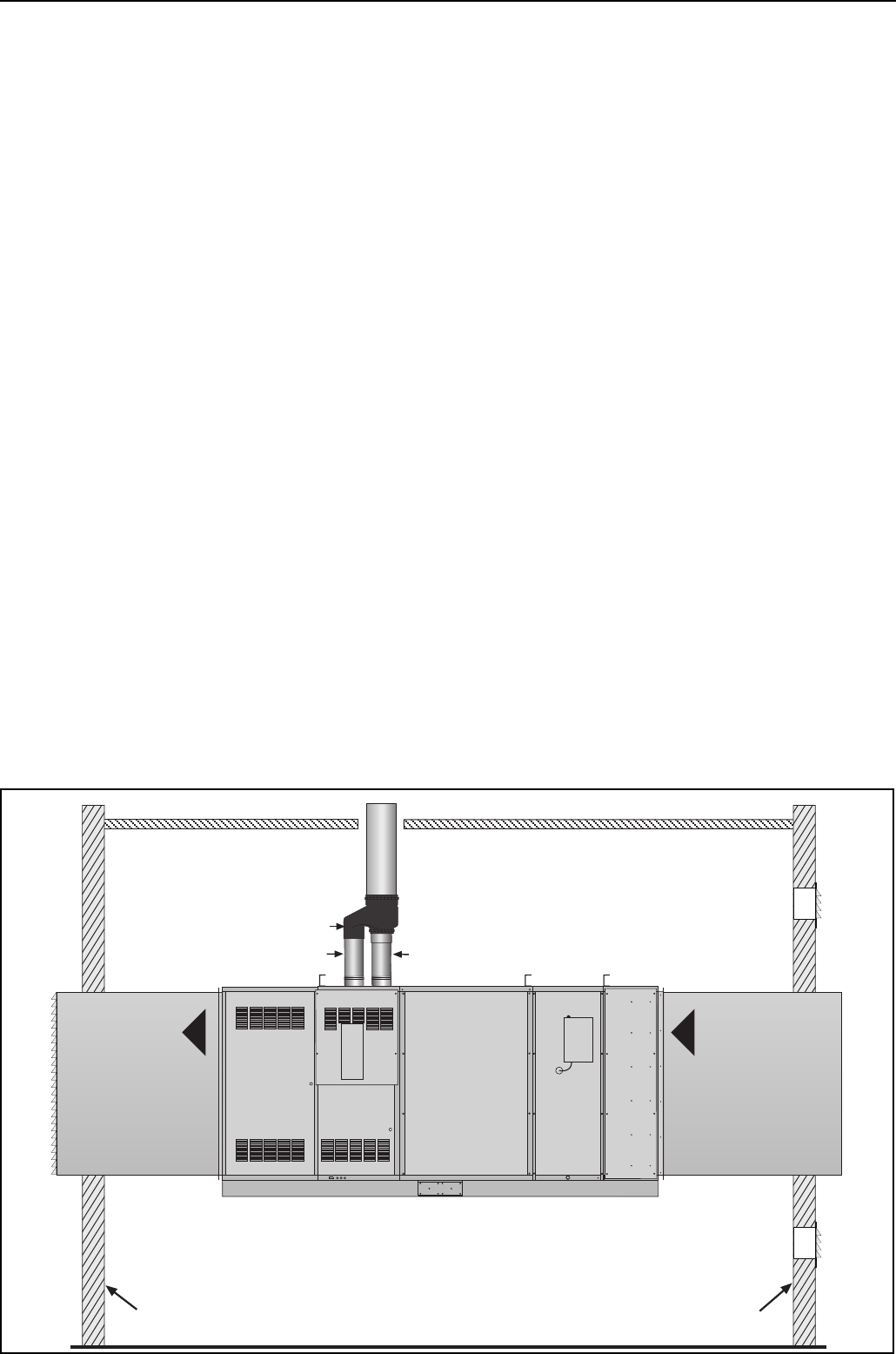
SECTION 7: AIR SUPPLY
13
SECTION 7: AIR SUPPLY
7.1 Room Sealed Installation
When installed as a room sealed heater, the air for
combustion is drawn in from outside the building. It
is important to ensure that there is adequate
ventilation to provide air for the distribution fan/s.
7.2 Open Flued Installation
Ensure adequate air supply at all times for both
combustion and heating requirements in
accordance with local and national codes. The air
supply to the heater must be fitted with a low
resistance terminal to prevent the ingress of debris.
See Page 12, Figure 7.
7.2.1 Heaters Installed Within the Heated Space
Where the volume of the heated space is greater
than 4.7 m
3
per kilowatt of total rated heat input and
the air change rate is at least 0.5/h, additional high
and low level ventilation will not be required.
For a building having an air change rate less than
0.5/h, ventilation will be necessary in accordance
with local and national codes. Ventilation direct to
outside must be provided as follows:
• Heaters above 70 kW heat input = 350 cm
2
+
2.5 cm
2
per kW of rated heat input above 70 kW
7.3 Building Ventilation
Where ventilation is required, air must be taken from
an outside point where it is not likely to be
contaminated or obstructed.
Where natural ventilation is used, suitable ventilation
with outside air at low level must be provided in
accordance with Section 7.2.1 and local and national
codes.
Where mechanical ventilation is used, extract rate
must be 5% - 10% less than the inlet rate. The
mechanical ventilation must be interlocked with the
burner on the heater.
7.4 Isolated Equipment Rooms
Ventilation must prevent the isolated equipment
room temperature from exceeding 32°C as well as
prevent any negative air pressure within the room.
See Page 13, Figure 9. Any isolated equipment
room containing air heaters will require permanent
air vents direct to outside air in compliance with local
codes.
Where natural ventilation is used, suitable
permanent openings at low and high level,
communicating directly with the outside air, must be
provided.
Where mechanical ventilation is used, extract rate
must be 5% - 10% less than the inlet rate. The
mechanical ventilation must be interlocked with the
burner on the heater.
Figure 9: DualAir
®
Units Installed in Isolated Equipment Rooms
Wall
Outside
Wall
High level
ventilation
Low level
ventilation
Max Temperature 32° C
Room air pressure must not be negative.
Duct distribution
system or
discharge to
heated space.
Return air duct
from heated
space or fresh
air from outside
Flue
Air Intake
Manifold


















